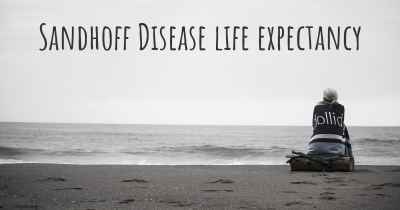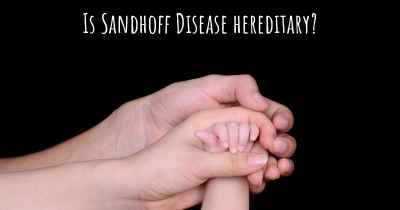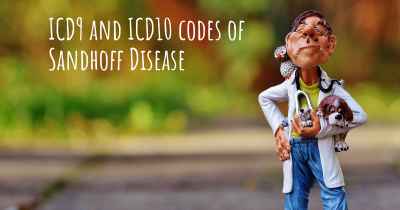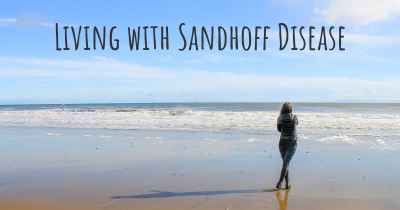What are the best treatments for Sandhoff Disease?
See the best treatments for Sandhoff Disease here

Sandhoff Disease is a rare and devastating genetic disorder that falls under the category of lysosomal storage diseases. It is an autosomal recessive disorder caused by mutations in the HEXB gene, resulting in the deficiency of a crucial enzyme called beta-hexosaminidase. This enzyme is responsible for breaking down a fatty substance called GM2 ganglioside, which accumulates in the brain and spinal cord of affected individuals.
Symptoms:
The symptoms of Sandhoff Disease typically appear in infancy or early childhood and progressively worsen over time. They may include:
- Developmental delays
- Loss of motor skills
- Seizures
- Progressive muscle weakness
- Cherry-red spot in the eye
- Intellectual disability
- Blindness
- Difficulty swallowing and breathing
Currently, there is no cure for Sandhoff Disease. However, various treatment approaches aim to manage the symptoms, slow down disease progression, and improve the quality of life for affected individuals.
Symptomatic and Supportive Care:
Since Sandhoff Disease affects multiple systems in the body, a multidisciplinary approach involving a team of healthcare professionals is crucial. Symptomatic and supportive care focuses on addressing specific symptoms and providing necessary support. This may include:
- Physical therapy to maintain mobility and muscle strength
- Occupational therapy to enhance daily living skills
- Speech therapy to improve communication and swallowing abilities
- Assistive devices to aid mobility and independence
- Seizure management with anticonvulsant medications
- Nutritional support to ensure adequate intake and prevent complications
- Palliative care to alleviate pain and enhance comfort
Experimental Therapies:
Researchers are actively exploring potential treatments for Sandhoff Disease. Some experimental approaches show promise in preclinical studies and early-phase clinical trials. These include:
- Enzyme Replacement Therapy (ERT): ERT involves administering the missing enzyme, beta-hexosaminidase, directly into the body. However, due to the blood-brain barrier, ERT alone cannot effectively treat the neurological symptoms of Sandhoff Disease.
- Gene Therapy: Gene therapy aims to deliver a functional copy of the HEXB gene into the cells of affected individuals. This approach holds potential for addressing the root cause of the disease and preventing the accumulation of GM2 ganglioside.
- Substrate Reduction Therapy (SRT): SRT aims to reduce the production of GM2 ganglioside in the body. By inhibiting the synthesis of this fatty substance, the accumulation can be slowed down. However, SRT alone may not completely halt disease progression.
- Chaperone Therapy: Chaperone molecules can help stabilize and enhance the activity of the deficient enzyme. This approach shows promise in restoring enzyme function and reducing GM2 ganglioside accumulation.
- Stem Cell Therapy: Stem cell transplantation, particularly hematopoietic stem cell transplantation (HSCT), is being investigated as a potential treatment for Sandhoff Disease. HSCT involves replacing the patient's bone marrow with healthy donor cells, which may provide the missing enzyme and slow disease progression.
Supportive Measures:
While awaiting breakthrough treatments, it is essential to provide comprehensive support to individuals with Sandhoff Disease and their families. This includes:
- Genetic counseling to help families understand the inheritance pattern and make informed decisions
- Psychological support to cope with the emotional impact of the disease
- Access to support groups and community resources for sharing experiences and obtaining practical assistance
- Education and awareness initiatives to promote early diagnosis and intervention
In conclusion, Sandhoff Disease is a devastating condition for which there is currently no cure. However, symptomatic and supportive care can help manage the symptoms and improve the quality of life for affected individuals. Ongoing research into experimental therapies offers hope for potential future treatments that may address the underlying cause of the disease and slow down its progression. Until then, providing comprehensive support and care remains crucial for individuals and families affected by Sandhoff Disease.
Posted Feb 24, 2017 by Levi Christopher Lucero, Jr. 2185
Posted May 11, 2017 by Mara 700








